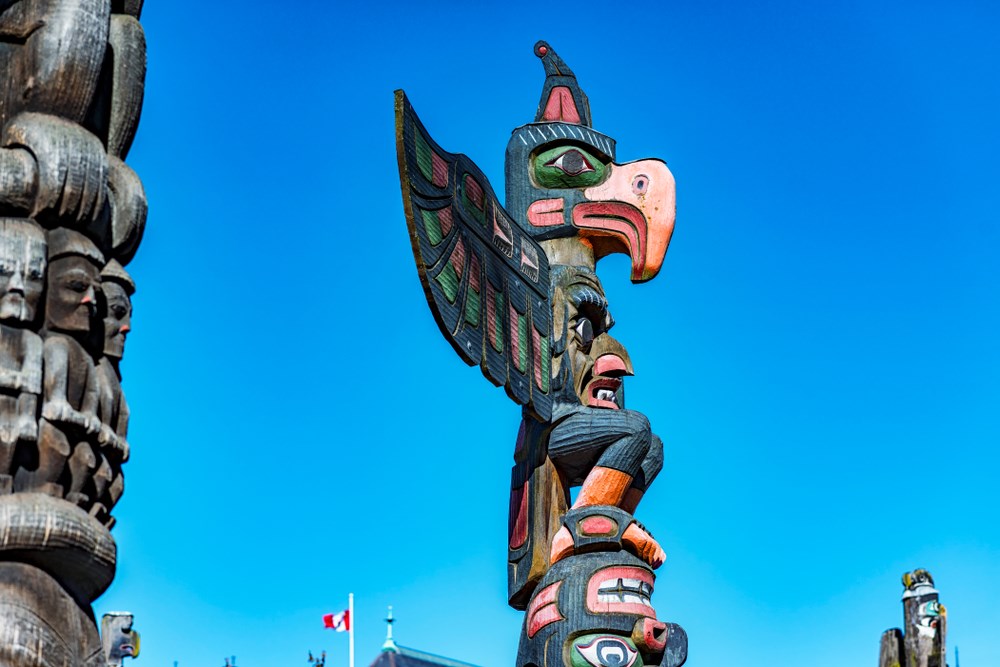
The Thunderbird: the Great Sirit of Native Americans
The Thunderbird is a widespread figure in Native American Mythology in the United States and Canada.
Described as a supernatural being, the enormous bird was a symbol of power and strength that protected humans from evil spirits.
It was called the Thunderbird because the flapping of its powerful wings sounded like thunder, and lightning would shoot out of its eyes. The Thunderbirds brought rain and storms, which could be good or bad. Good – when the rain was needed or bad when the rain came with destructive strong winds, floods, and fires caused by lightning.
The bird was said to be so large, that several legends tell it picking up a whale in its talons. They were said to have bright and colorful feathers, with sharp teeth and claws. They were said to live in the clouds high above the tallest mountains.
Various tribes have different oral traditions about the magical Thunderbird, which they both highly respected and feared.
- In Algonquian Mythology, the Thunderbird controls the upper world while the underworld is controlled by the underwater panther or Great Horned Serpent, from which the Thunderbird protects humans by throwing lighting at it. According to their legends, the Thunderbirds were ancestors of the human race and helped to create the universe.
- The Menominee of Wisconsin tell of a great mountain that floats in the western sky, upon which the Thunderbirds live. From there, they control the rain. They are the enemies of the great horned snakes, called the Misikinubik, which they fight with to prevent them from overrunning the earth and devouring mankind. They are said to be messengers of the Great Sun himself and delight in deeds of greatness.
- The Ojibwa version is similar, in that the Thunderbirds fight underwater spirits. Their traditions also say that the Thunderbird is responsible for punishing humans who break moral rules. They said that the bird was created by Nanabozho, a high spirit, and cultural hero, and that the birds lived in the four directions and migrated to Ojibwe lands during the spring with other birds. They stayed until the fall when the most dangerous season for the underwater spirits had passed, at which time they migrated south with other birds.
- The Winnebago say that a man who has a vision of a Thunderbird during a solitary fast will become a war chief. They also believe that the Thunderbird has the power to grant people great abilities.
- The Thunderbird of the Sioux people was a noble creature that protected humans from the Unktehila, who were dangerous reptilian monsters. Some believed that they were shapeshifters, who often changed their appearance to interact with people. To the Shawnee tribe, they appeared as boys and could be identified by their tendency to speak backward.
In some tribes, Thunderbirds were considered extremely sacred forces of nature, while in others, they were treated like powerful, but otherwise ordinary members of the animal kingdom.

Many legends reference the anger of the Thunderbirds as something fearsome to behold, which could result in harsh punishments. In one story, an entire village was turned to stone for their wrongdoings. Some say that the mythology began with the ancient mound builders
Throughout history, the Thunderbird symbol has appeared on totem poles, pottery,petroglyphs masks, jewelry, and carvings. The legends have been told through songs and oral histories.
The most important witness of these powerful spirits are the Canadian Totem Poles









